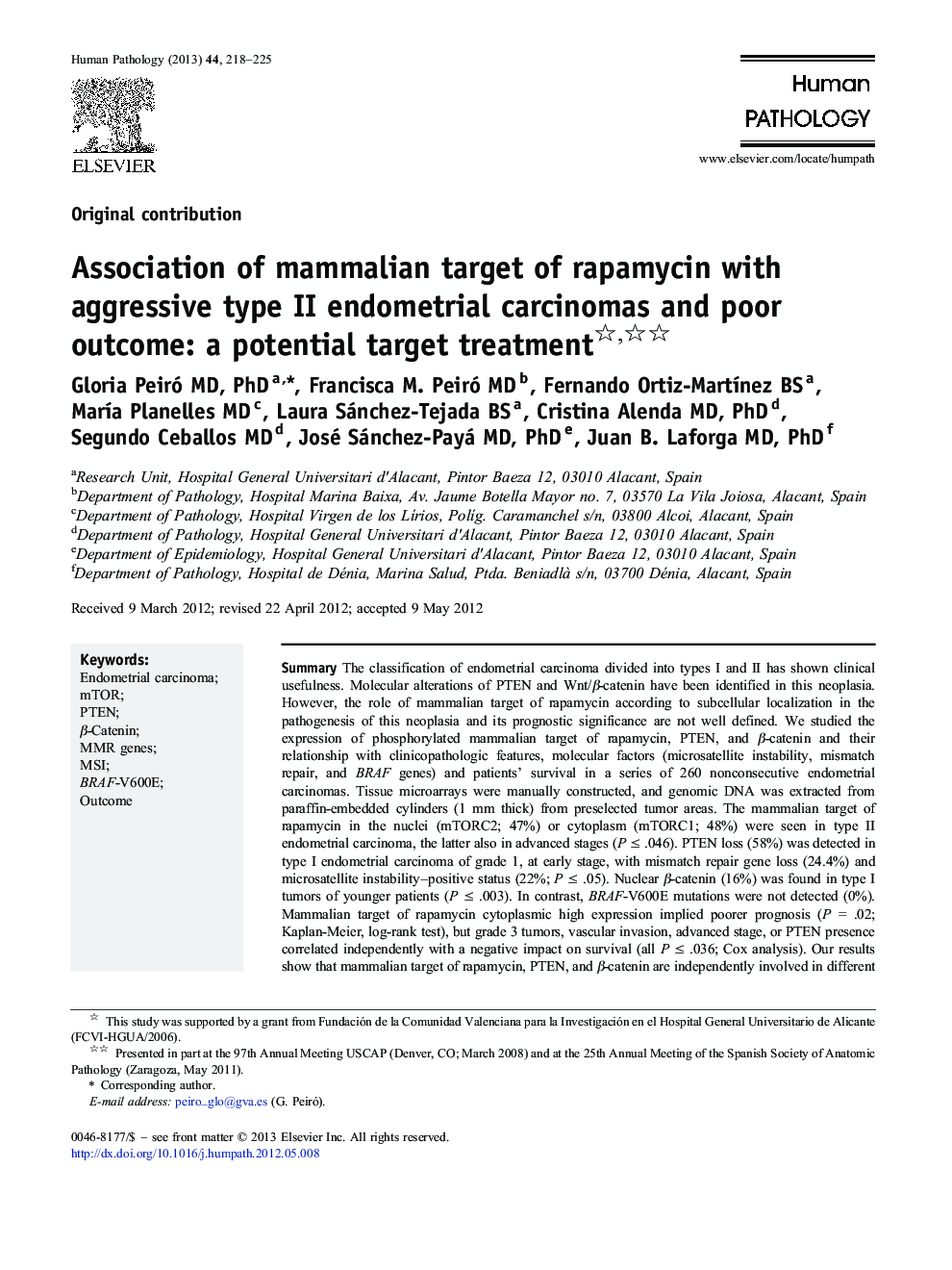| Article ID | Journal | Published Year | Pages | File Type |
|---|---|---|---|---|
| 4132956 | Human Pathology | 2013 | 8 Pages |
SummaryThe classification of endometrial carcinoma divided into types I and II has shown clinical usefulness. Molecular alterations of PTEN and Wnt/β-catenin have been identified in this neoplasia. However, the role of mammalian target of rapamycin according to subcellular localization in the pathogenesis of this neoplasia and its prognostic significance are not well defined. We studied the expression of phosphorylated mammalian target of rapamycin, PTEN, and β-catenin and their relationship with clinicopathologic features, molecular factors (microsatellite instability, mismatch repair, and BRAF genes) and patients' survival in a series of 260 nonconsecutive endometrial carcinomas. Tissue microarrays were manually constructed, and genomic DNA was extracted from paraffin-embedded cylinders (1 mm thick) from preselected tumor areas. The mammalian target of rapamycin in the nuclei (mTORC2; 47%) or cytoplasm (mTORC1; 48%) were seen in type II endometrial carcinoma, the latter also in advanced stages (P ≤ .046). PTEN loss (58%) was detected in type I endometrial carcinoma of grade 1, at early stage, with mismatch repair gene loss (24.4%) and microsatellite instability–positive status (22%; P ≤ .05). Nuclear β-catenin (16%) was found in type I tumors of younger patients (P ≤ .003). In contrast, BRAF-V600E mutations were not detected (0%). Mammalian target of rapamycin cytoplasmic high expression implied poorer prognosis (P = .02; Kaplan-Meier, log-rank test), but grade 3 tumors, vascular invasion, advanced stage, or PTEN presence correlated independently with a negative impact on survival (all P ≤ .036; Cox analysis). Our results show that mammalian target of rapamycin, PTEN, and β-catenin are independently involved in different molecular subtypes of endometrial carcinoma with diverse patients' prognosis and support their distinctive treatment based on targeted drugs.
